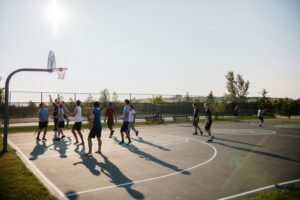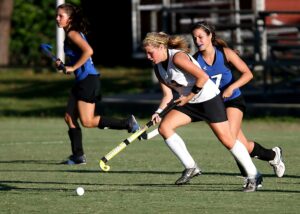







Why bother with Preseason training?
Preseason provides athletes the opportunity to enhance their fitness and practice skills before the season commences, with the primary objective of improving performance during games. Additionally, preseason plays a crucial role in preparing the body for the demands of a full season of competitive games, reducing the risk of injury. So, how can amateur athletes get the most out of their preseason?
Improving Fitness: Start realistically and build steadily
Jumping straight into intense preseason training can be tempting, but it is essential to give the body time to adapt to increased training loads. Begin at a volume and intensity that aligns with your current fitness level and progress from there. Especially if you had a light offseason, easing into preseason training is necessary to avoid overload injuries. However, to increase fitness and prepare the body for the upcoming season, training should progressively build over the preseason to match (or exceed) the in-season demands of your sport.
Sports-specific training:
A comprehensive preseason typically includes cardiovascular training (such as running) to improve overall fitness. It is equally important to incorporate drills that focus on tasks and skills specific to your sport. This approach not only enhances performance (through skills like passing, shooting, tackling, etc.) but also prepares the body for higher-load tasks encountered during games, such as high-intensity running, changing direction, jumping, landing, kicking, and throwing. Preparing the body for these repetitive loads and practicing safe performance techniques under fatigue is critical to minimize injury risks.
Supplemental strength training:
To further enhance performance and reduce injury risk, incorporating additional strength training during preseason is beneficial. Engaging in resistance training at the gym, exercise classes, or home exercises can improve the strength, power, and endurance of relevant muscles, increasing their ability to meet the demands of your sport. Generally, 2-3 sessions per week of strength training are needed to achieve noticeable improvements, making preseason ideal due to the absence of weekend games. Maintaining these improvements usually requires just one session per week during the season.
Injury rehabilitation and prevention:
Preseason is an ideal time to address previous injuries or issues and ensure full recovery. Often, minor injuries persist through the season and are neglected during the offseason, potentially leading to reinjury when the high-intensity season resumes. Reflect on any pain or injuries experienced last season or recurring issues over the years. Preseason is the perfect time to consult a physiotherapist to assess these areas and determine preventive measures. Additionally, addressing any niggles that arise during preseason training promptly, can prevent them from becoming persistent issues during the season.
If you have any questions or need assistance with your preseason setup, our Physios are available to provide guidance.
Best wishes for your upcoming preseason and competition.
Summary
- Build game fitness by starting to train at your current fitness level and steadily increase the intensity
- Add Sport specific drills and training to best prepare your body to handle the demands of competition
- Add extra strength training during preseason to enhance performance and reduce injury risk
- Address previous injuries or new niggles straight away to start your season fit and strong